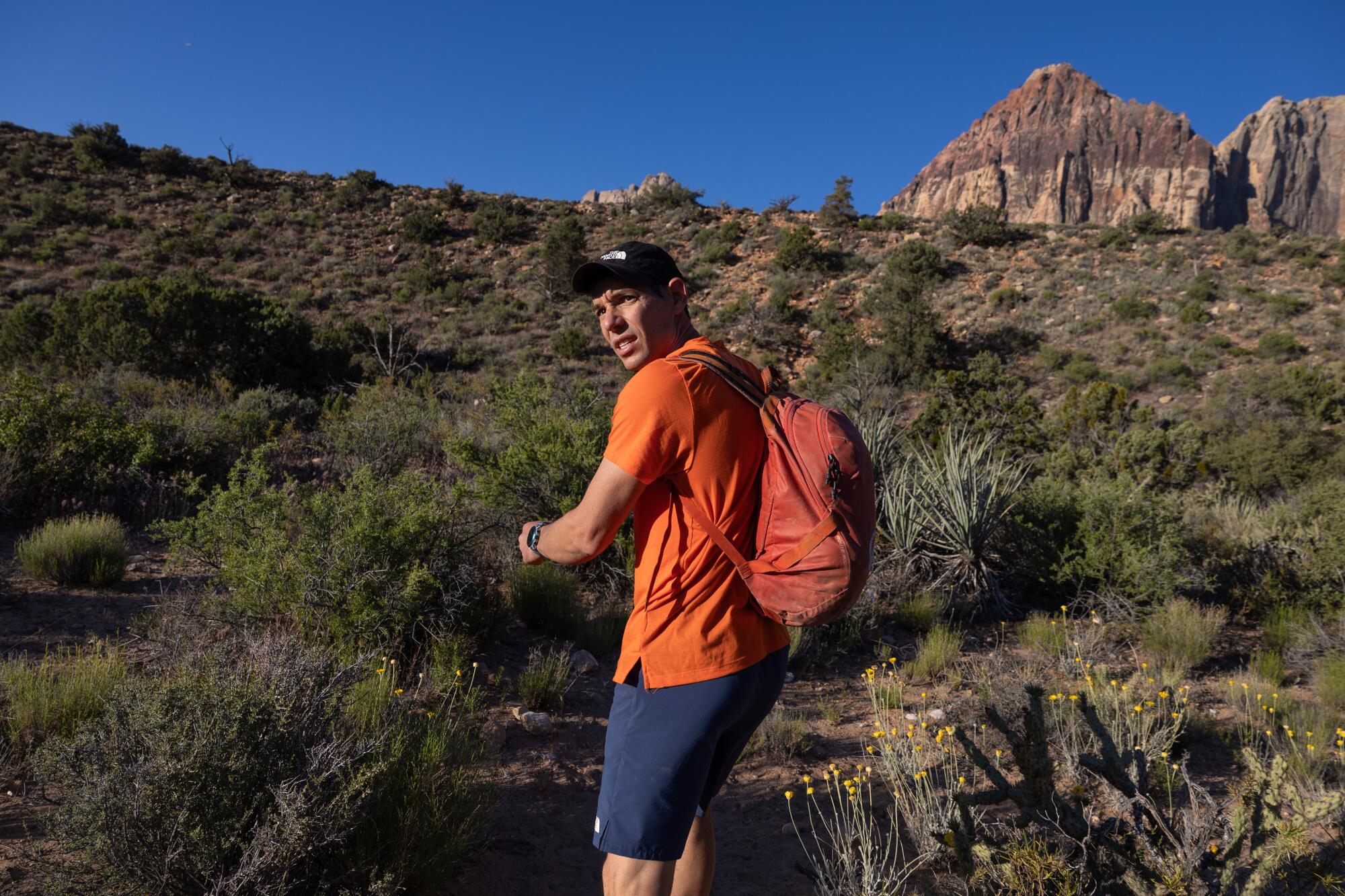
LAS VEGAS, Nevada — For many, the lure of Las Vegas is the near complete immersion in a man-made world.
Visitors bury themselves deep inside temperature-controlled casinos, surrounded by artificial lights and sounds, with no windows or even clocks to remind them that the outside world still exists.
It’s one of the indoors-iest places on the planet.
But just outside the city, about 20 minutes from the bachelor parties and slot machines, a growing number of elite outdoor athletes are buying homes, starting families and declaring Las Vegas the adventure sports capital of the United States.
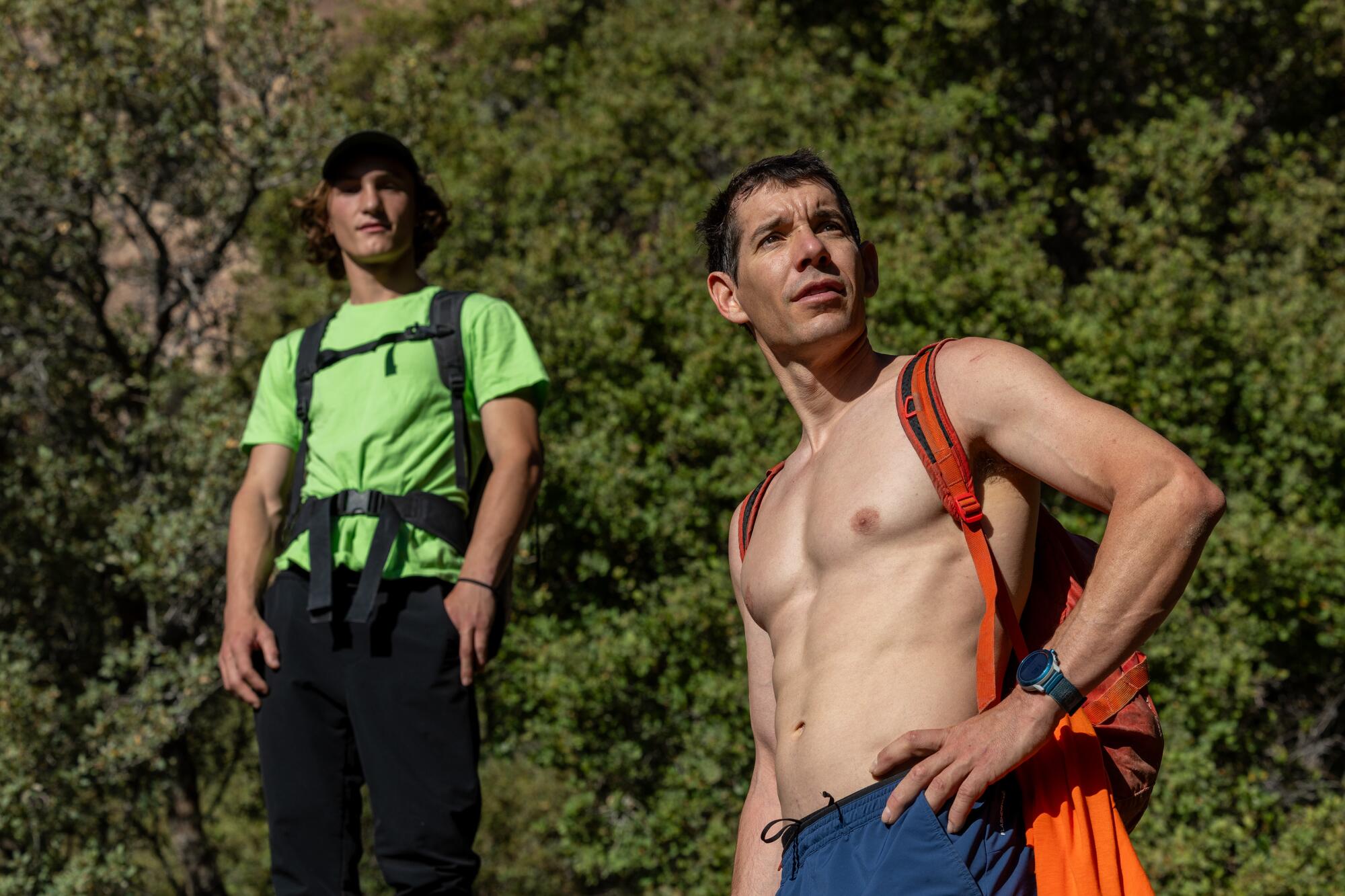
“It just has unparalleled access to the outdoors,” gushed Alex Honnold, the world’s most famous rock climber and subject of the Academy Award-winning documentary “Free Solo,” about his breathtaking 2017 ascent of Yosemite’s El Capitan, a nearly vertical granite wall that rises 3,000 feet above the valley floor.
It was first climbed in 1958 by a team who took 18 months searching for tiny protrusions and cracks to use as holds and driving heavy metal spikes into the rock where no natural holds existed. Honnold shocked the climbing world by using only his hands and feet — no safety equipment of any kind — and completing the ascent in just under four hours, a new speed record for the route.
In early May, as light from the rising desert sun seemed to set fire to the towering cliffs of Red Rock Canyon National Conservation Area just west of Las Vegas, Honnold pulled up in his electric truck ready to sprint up another sheer rock face. This one, known as the Rainbow Wall, rose about 1,000 feet above the desert floor.
Honnold, 38, who is of medium height and build and graying slightly at the temples, was dressed in a T-shirt, shorts and running shoes. At first glance, there was little to set him apart from a dozen or so other hikers and climbers lined up to enter the park at 6 a.m.
But then he tossed a small pack over his shoulder and started moving, eager to cover several miles of brush and boulder-strewn landscape between him and the base of the climb before the day got too hot. His small entourage, which included a climbing partner and two Times journalists, struggled to keep up.
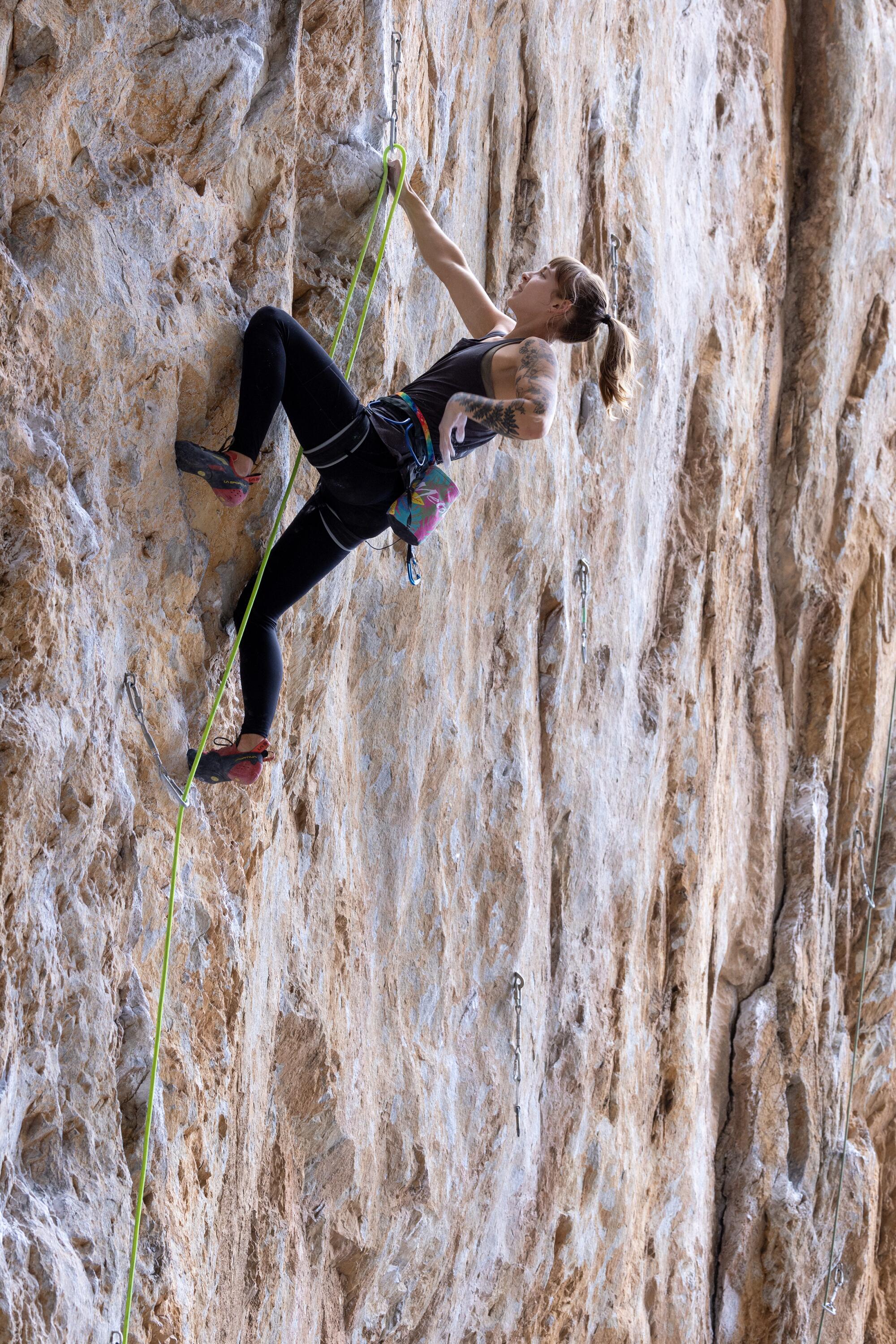
“Honestly, I would say Las Vegas is better than any of the other cities in the country that have a reputation for being outdoorsy,” Honnold said. “People go to Denver because they say they want to be near the outdoors. But it’s at least an hour’s drive away from the real mountains.
“In Vegas, you can live in the middle of suburbia and be 15 minutes from trailheads where you can be completely alone and feel like you’re gonna die,” he said as two of his companions hunched over and gasped for breath.
What sets Vegas apart is the unexpected geographic diversity, making world-class climbing easily accessible year-round. In the winter, there are the endless routes in Red Rock, the canyon that begins just beyond the suburbs. Its sandstone walls start at about 3,000-feet elevation, which means they’re low enough to remain warm and pleasant even in December and January.
When spring and summer roll around, and the valley becomes a furnace, 12,000-foot Mt. Charleston is less than an hour’s drive away and the upper reaches can be 30 degrees cooler. There, towering limestone walls offer some of the toughest technical climbs in the world, and there are enough routes to keep a professional climber busy for a lifetime, Honnold said.
Even Yosemite, long regarded as mecca for rock climbers from all corners of the globe, where Honnold and so many other professionals made their reputations, can’t match that.
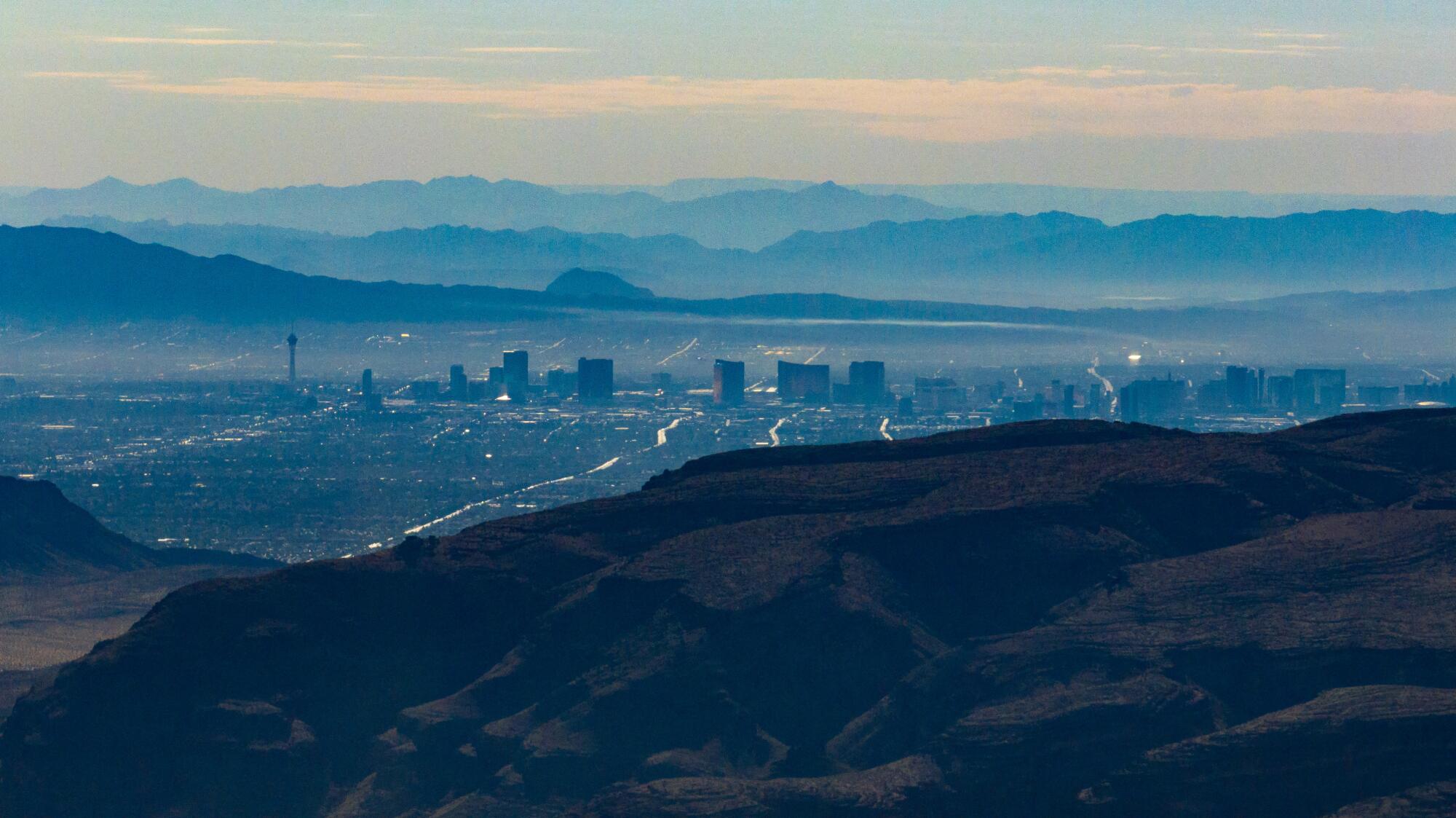
“Yosemite is a world destination in the spring and fall,” Honnold said. “But in the summer, it’s way too hot and way too crowded.” And in the winter, at 4,000 feet and directly exposed to Pacific storms, “it’s too wintry.”
And even when the weather is good, day-to-day life for climbers in Yosemite looks more romantic in old documentary films, and on Instagram, than it is in real life. Routes on its biggest and most famous walls, El Capitan and Half Dome, were pioneered by mostly unemployed self-proclaimed “dirtbag” climbers in the late 1950s and early 1960s, who built a fierce and defiant counterculture in the nearby campgrounds.
Among them was Yvon Chouinard, a tinkerer whose small climbing gear business grew into the billion-dollar retailer Patagonia, but who spent years living hand to mouth with fellow climbers in tents and out of their cars. He has told more than one interviewer that, at times during his early climbing days, he was so broke he subsisted on canned cat food because “it was better than dog food.”
That underlying ethos had mellowed a bit, but still existed when Honnold first drove the family minivan down from Sacramento in the early 2000s. He was still living in a van in 2017 when he made the career-defining climb of El Capitan.
But ask anyone who has done it for long and they’ll tell you, van life gets old, even in a place as beautiful as Yosemite.
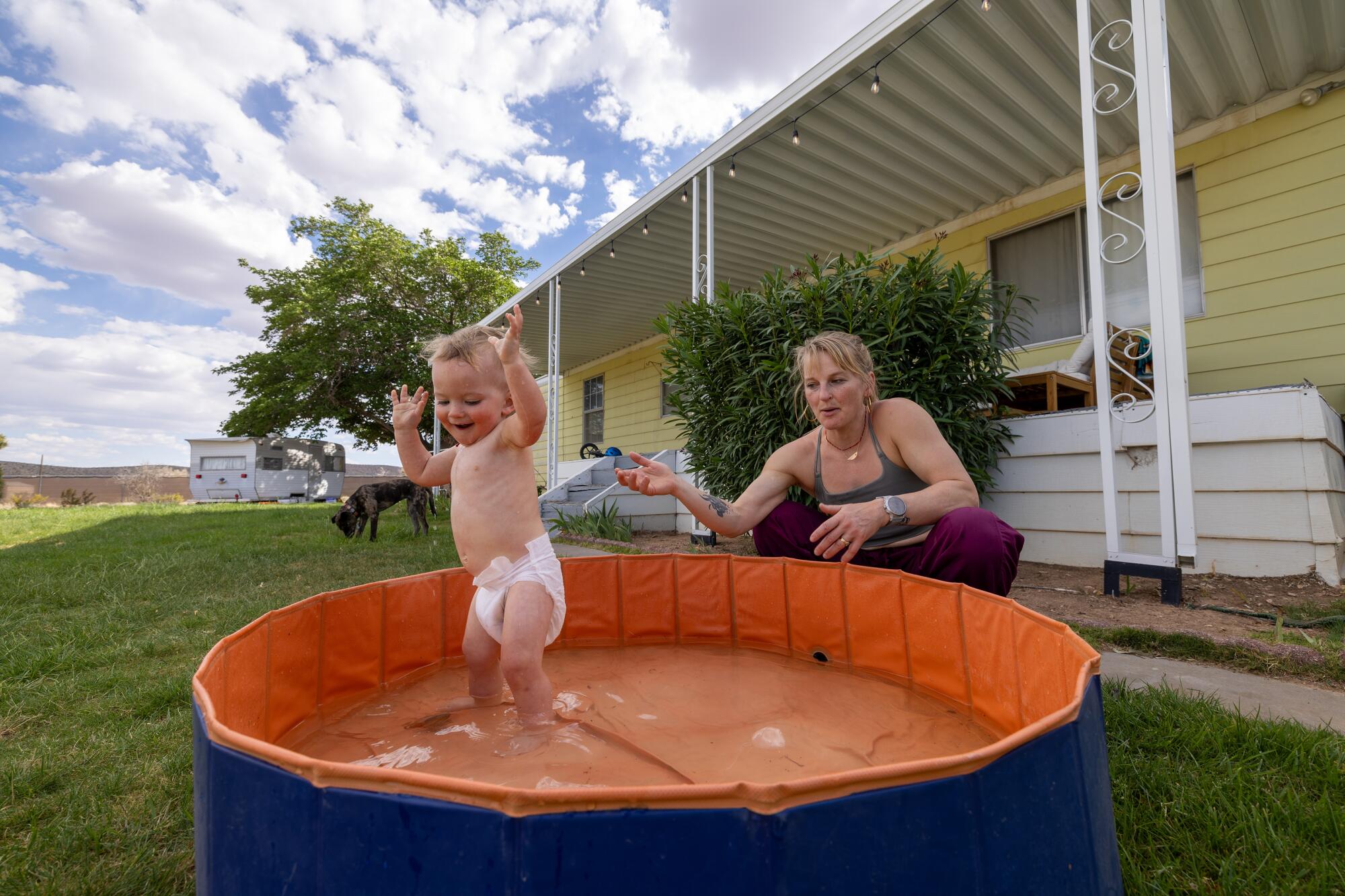
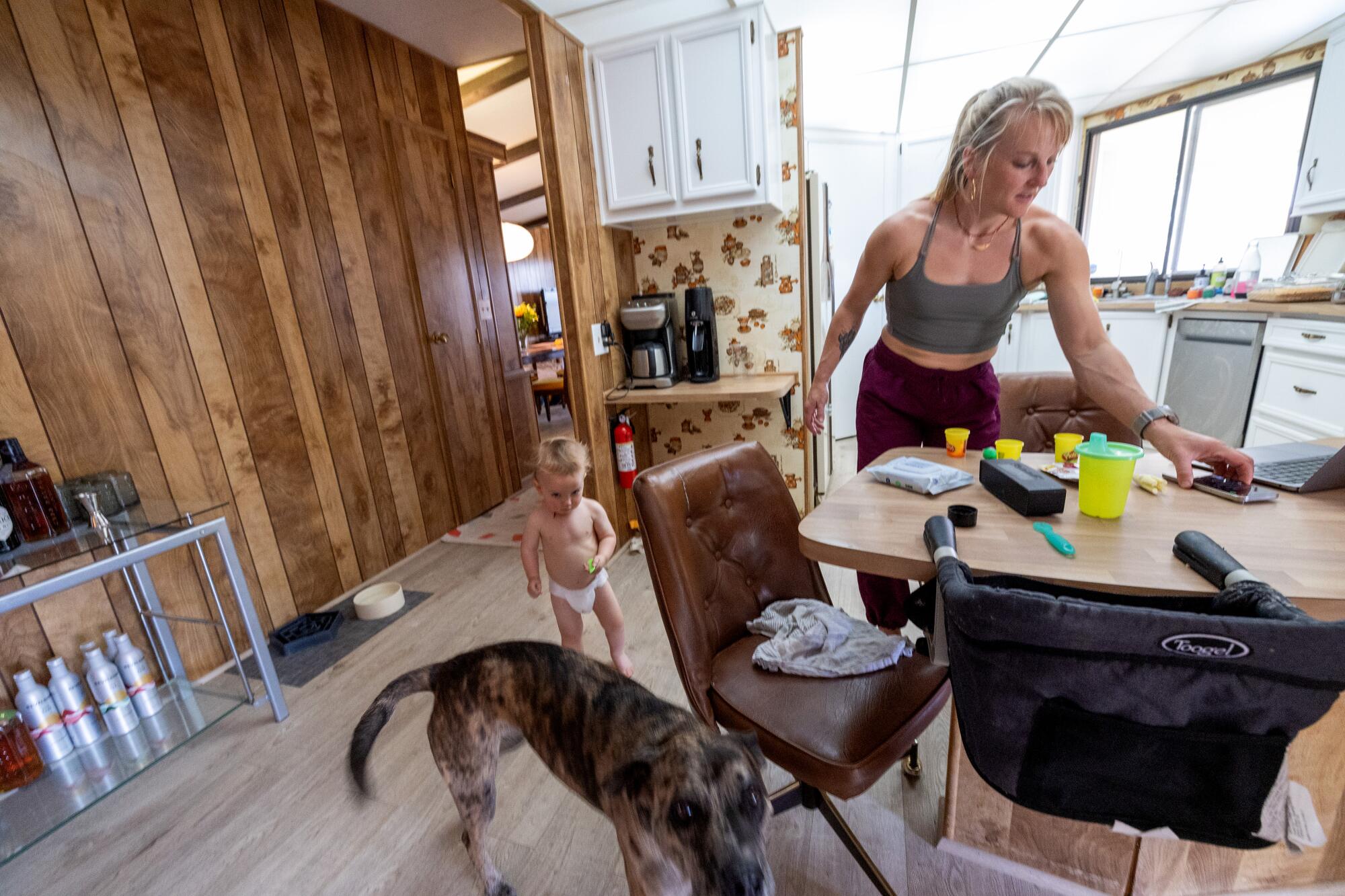
Emily Harrington, a five-time U.S. national champion in sport climbing and one of Honnold’s good friends, knows it all too well.
“Yosemite is just a hard place to exist,” she said. You spend all day pushing yourself to mental and physical exhaustion on the climbing walls, but there’s no rest when you come down. You have to find a place to camp, or park the van, or drive the van on long, crowded, windy roads to find a place outside the park. And even when you find a place, you’re still stuck in a van.
“It’s quite stressful,” Harrington said.
At 37, Harrington says climbers of her generation are looking to settle down. She and her husband, fellow climber Adrian Ballinger, recently had a son, which added real urgency to their quest.
That’s why they bought a place in Vegas not far from Honnold, his wife and their two young kids.
Harrington’s joy and relief are palpable as she lists the upsides of the new arrangement. “I can go out, drive five minutes to the trailhead, climb big routes all day, and then come back to my house and my kid and put him to bed, and I don’t have to live in a van!”
Hot showers. Soft beds. Great food. She rattled off about half a dozen of her favorite restaurants that are only a few minutes away. “It’s just so nice,” she said.
Jonathan Siegrist, 38, who is regarded as one of the world’s greatest technical climbers, couldn’t agree more.
While Honnold was battling the Rainbow Wall and nearly 90-degree heat in Red Rock last week, Siegrist and his wife, Shaina Savoy, huddled in puffy jackets between pitches on the cool limestone of nearby Mt. Charleston.
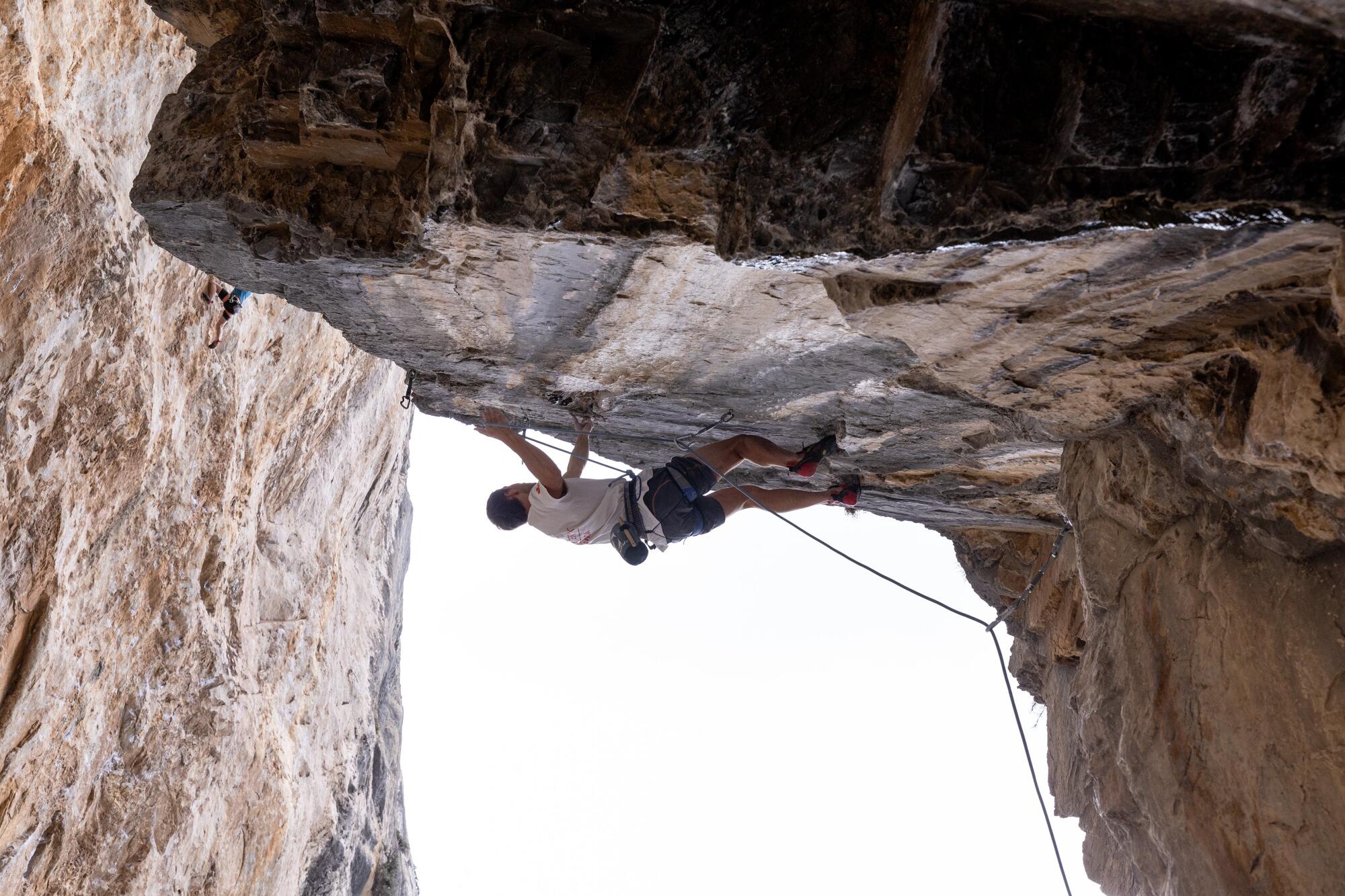
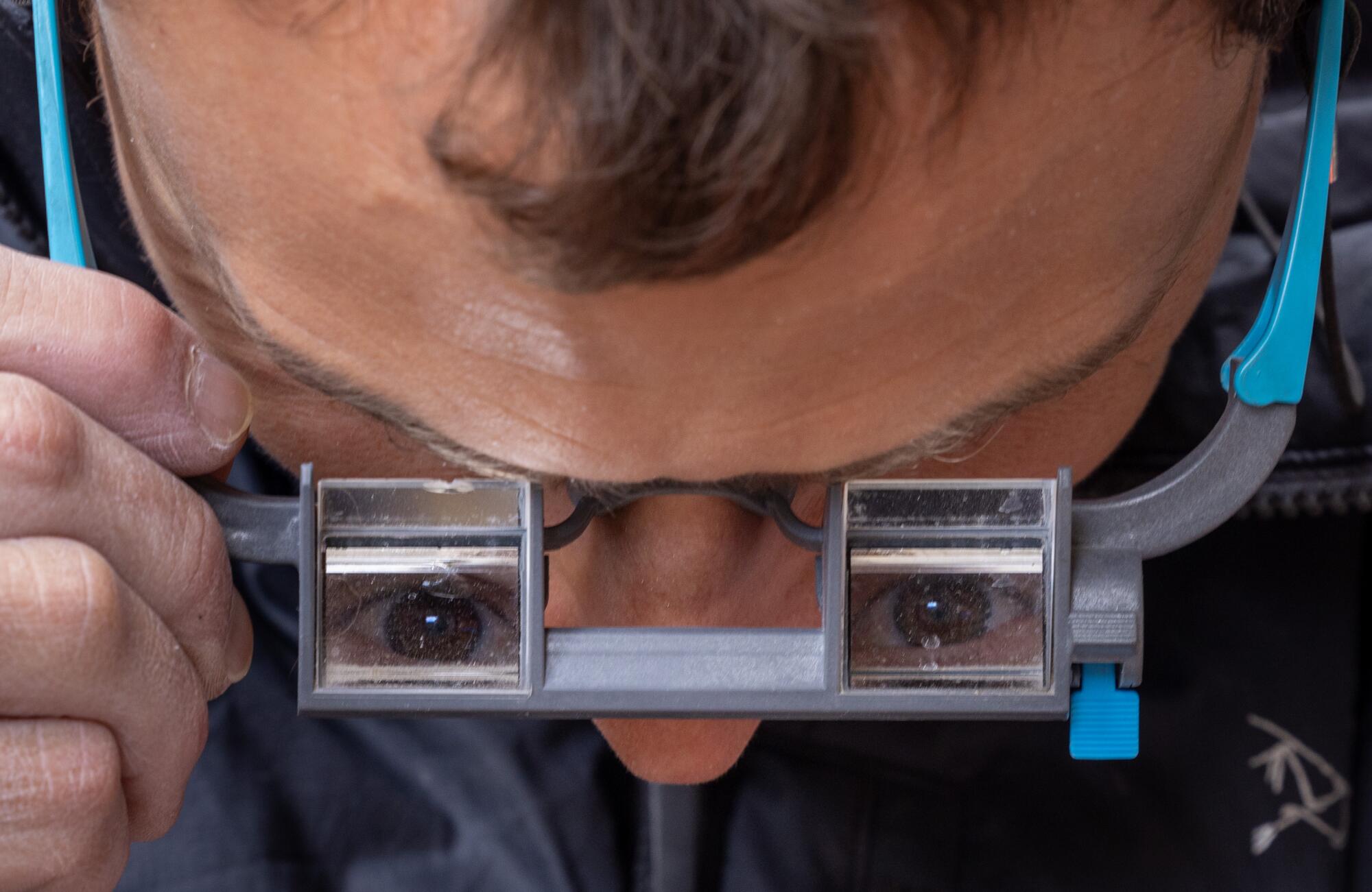
Siegrist is unassuming when you first meet him: 5-foot-6, a firm handshake, a friendly smile. But then he pulls off his warm outer layer and starts climbing. Supporting his entire body with just his fingertips and the points of his toes on microscopic holds, he ascends the wall in precise choreographed movements, his progress as fluid and inevitable as flowing lava.
Despite the intense effort, which would leave most people gasping and single-minded, Siegrist had the aerobic and mental capacity to carry on a normal conversation.
He lived in his truck, off and on, for seven years. He settled down in Vegas because the climbing is better than anywhere else in the country and because the cost of living is much more reasonable than trendier climbing spots like his hometown of Boulder, Colo.
Even so, he struggles to convince young climbers, who are still trying to make names for themselves, that Vegas is the place to be.
“This city still has a really bad reputation in the outdoor community,” he said. “A lot of outdoor people would never stoop so low as to walk into a casino and enjoy themselves, or shop at a strip mall. That’s a huge contributing factor as to why Vegas has stayed under the radar.”
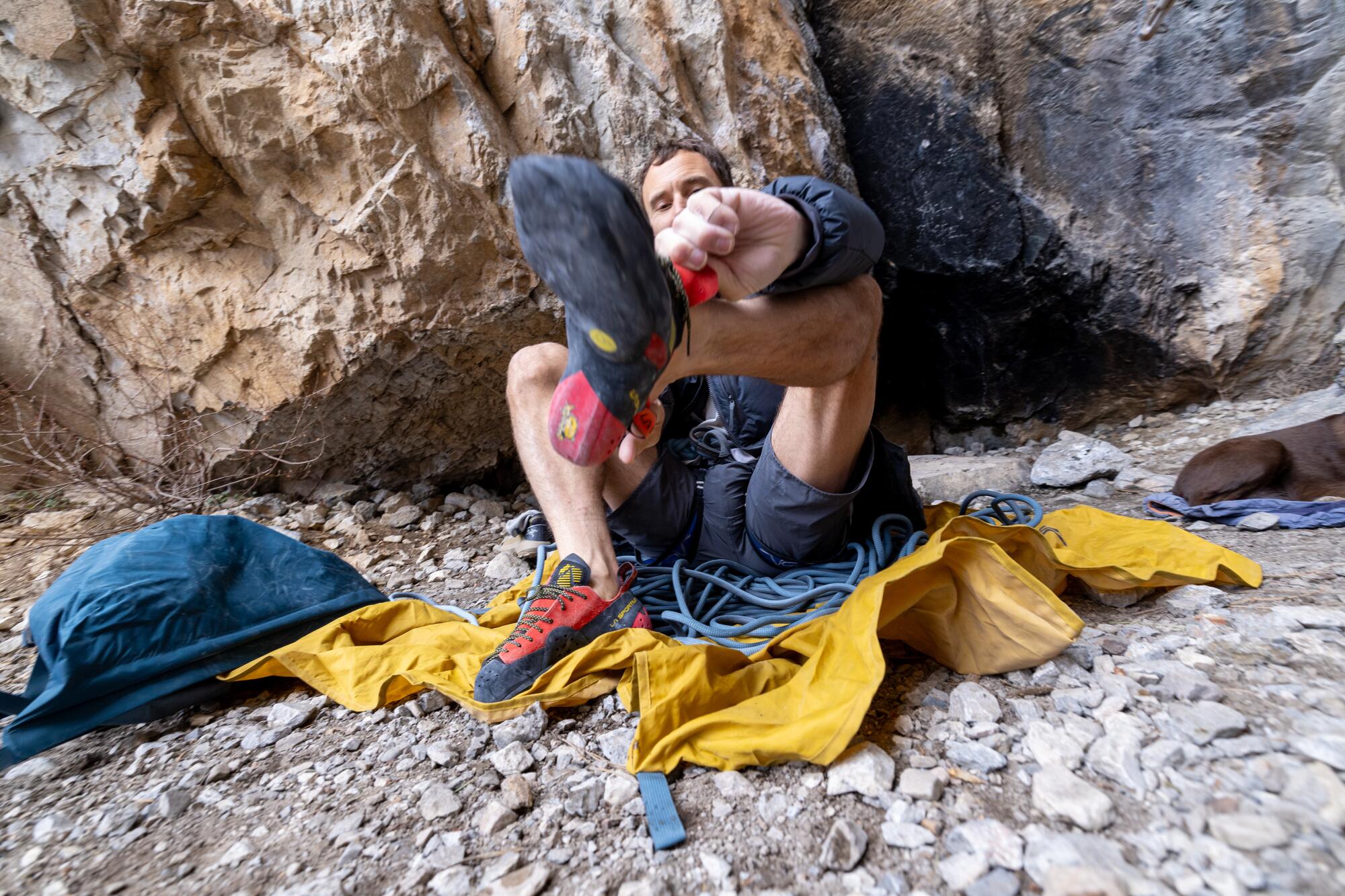
But it’s actually one of the perks, he said.
Fashionable mountain towns are full of people trying to fit in, Siegrist said, to conform to a pretty strict outdoorsy aesthetic. They tend to look, dress and think the same way.
Freedom from that is one of the things he loves about Vegas.
“I’m not just talking about racial diversity. I’m talking about economic diversity, diversity of ideas and diversity of interests,” he said. On rest days, when he’s not climbing, “I can be a totally different version of myself.”
The difference can show in something as simple as walking his dogs off leash. If he tries that in Boulder, where his parents still live, “I’ll get yelled at by, like, six people in the first 30 seconds, even though the dogs are really obedient,” he said.
In Vegas, “nobody gives a s— what your dogs are doing as long as they’re not hurting anyone.”
Honnold, whose parents were teachers and who supports strong public services, confessed he, too, was pleasantly surprised by the lower cost of living in Nevada.
“I mean, there’s no income tax! And the house was so cheap, it nearly paid for itself in tax savings,” he said. All those years on the road, living in vans, he had listed his mom’s house in Sacramento as his address.
“That was crazy,” he said, “I was like, why didn’t I move to Vegas sooner?”
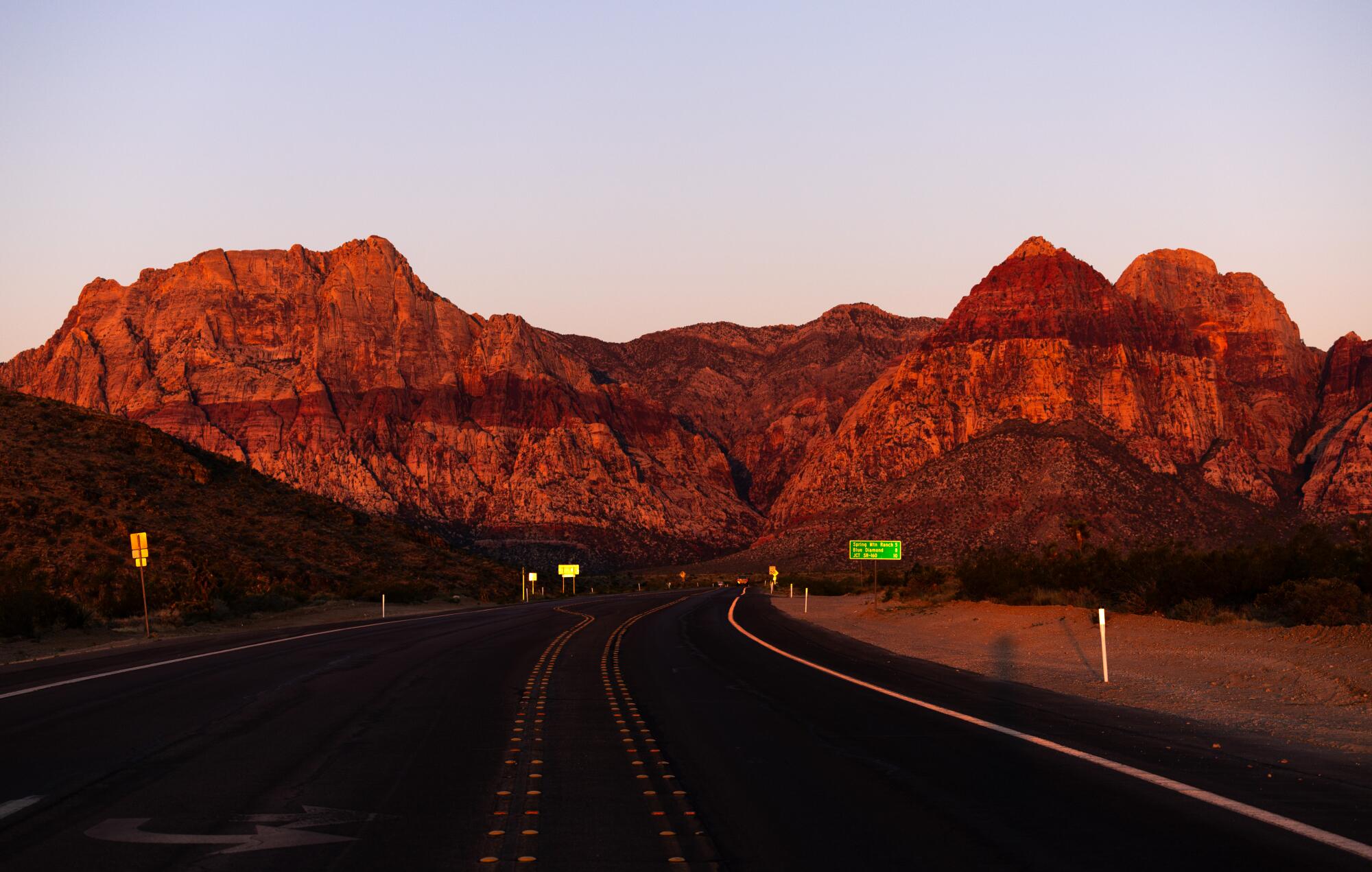
The Vegas airport is another huge draw for people whose profession demands they travel the world in search of adventure. It’s 20 minutes from Honnold’s house, the security lines are usually a breeze and, because of all the tourists, it has direct flights almost anywhere you’d want to go.
One day, when he was splitting time between training and promoting “Free Solo,” he climbed a 2,000-foot wall in the morning, showered at home, then caught a noon flight to London.
“Where else in the world can you do that?” he asked.
But what about that other side of Vegas, the strip? Honnold said he and his wife go there once or twice a year to catch a show and otherwise avoid it as much as possible.
Does he ever sit down at a slot machine and start pulling the lever?
“If a game is designed for you to lose, why play?” he asked. “I’ve actually never tried it. I like to joke that I only gamble with my life.”
More to Read
Sign up for Essential California
The most important California stories and recommendations in your inbox every morning.
You may occasionally receive promotional content from the Los Angeles Times.












